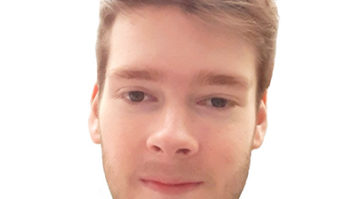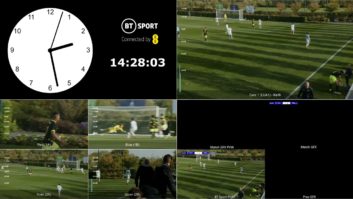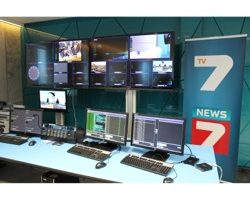
There needs to be a balance between editorial and practical skills-based TV production training – one cannot be ignored one at the expense of the other. So what does the balance look like in different countries around Europe? Philip Stevens investigates the state of television training.
“There is no call for training multi-camera directors today.” That was the answer when a well-qualified director, who felt he could pass on his experience, approached a couple of colleges offering training courses. A cynic might say that in some cases that lack of training shows in the output of some channels.
Fortunately, there are colleges and other training establishments that take directing a little more seriously. However, there is an explanation about lack of instruction in this particular area of the industry. “For those looking at achieving a Masters degree, the overall culture of the training courses is more conceptual in nature than practical,” explains Jonathan Wardle from the UK’s Bournemouth University. “In other words, the emphasis is not on skills, as such, but on the overview of the industry.”
A look at the prospectus reveals what Wardle has in mind. The courses include Film Distribution and Marketing, Future Media Platforms and Environments and Developing Digital Feature Film Projects.
He goes on, “However, here at Bournemouth we do recognise that practical skills are extremely important. In association with Sony, we have recently built a high definition multi-camera studio that is available for students on the undergraduate courses. And that allows us to include multi-camera directing – as well as other hands-on opportunities – to 18 to 21 year old students.”
Another training establishment that recognises the value of practical training is the UK’s National Film and Television School. “We offer a specialist two year MA course in Producing and Directing Television Entertainment. It is the only course of its kind in the UK,” declares Karin Farnworth, head of Marketing and PR at NFTS. The school has its own SDI studio with a five Sony camera set up, Grass Valley Kalypso vision mixer, Soundcraft B800 audio mixer and graphics equipment. It also operates both Avid Xpress and Final Cut Pro edit suites.
“During the course they get hands-on experience in a variety of production roles and acquire a thorough understanding of the production process encompassing everything from the creative to the technical and the business aspects,” states Farnworth. “As a result, they graduate with the skills to direct TV studio multi-camera and single camera, the know-how to produce single items or entire entertainment shows, a practical working knowledge of production methods, the ability to edit and the capability to generate entertainment programme ideas. Beyond that, they will have the confidence and know-how to pitch those ideas to commissioning editors.”
Students from this course have won the Royal Television Society’s Best Student Entertainment Show award every year since it was introduced. And according to Farnworth, 100% of its students find work in the industry.
Scandinavian scene
Sweden’s Dramatiska Institutet runs a three year long BA course for TV producers. The Diploma programme concentrates mainly on practical work such as editing or interviewing, but also involves theory, including the development of new formats.
“Our students do not have to pay for participation in these courses as all higher level education is free in Sweden,” says Tinna Joné, head of the Documentary Film, Radio and Television department. “The courses are conducted by industry professionals who have a good record in the field – rather than those with just tuition skills.”
Joné continues, “Our studio was built a couple of years ago and has been equipped to the same professional standards as you find in the wider industry. In fact, the studio is regularly used by outside production companies.”
In order to graduate, students are required to make several productions in different genres — which are then evaluated by the teachers and external producers. “We are the most experienced school in media education – and about 75% of our students find employment in the industry,” says Joné.
In neighbouring Norway, the Lillehammer University College, Faculty of Television Production and Film Studies offers two three-year courses for a Bachelor degree and two two-year programmes for a Masters. There is also a three-year study for production managers. All these courses are based on practical work, augmented with theory.
“We expect our students to know the basics of TV production and they should have some experience before they start. We mainly teach directing, editing, photography, sound engineering and production management,” explains Hege Michelsen, dean of the facility.
She continues, “We have separate practical studies in both single camera and multi-camera techniques. They used to be combined, but we found it more important to teach specific techniques. Our multi-camera programme is the most advanced in Europe.”
The facility operates one small and two large fully equipped studios equipped with Thomson LDK 300 cameras, Kayak DD2 vision mixers, MIDAS analogue audio mixes, Digidesign ICON Protools, and VizRT and Pixel Power graphic systems. “We also have ten Final Cut Pro suites and two classrooms with a total of ten Premiere Pro and 11 Final Cut editors,” states Michelsen.
All of the tutors are industry professionals, most of them combine their teaching with work projects. In this way, says Michelson, the training has a close connection with the industry. “The multi-camera students receive assignments in all genres and in a wide range of productions. For example, using our own Outside Broadcast bus they cover news and great outdoor sports events such as the World Cup downhill and soccer matches, huge cultural activities, music festivals and classical concerts. Indeed, our students learn to read notes, and that gives them a great advantage and knowledge in music productions. I would go so far as to say they are the most advanced students at this in Europe.”
English in Estonia
Based in Tallinn University, Estonia, the Baltic Film and Television School is the only higher-educational institution in northern Europe teaching film, television and media studies in English. The school uses both academics and industry professionals, and the courses begin with practical tasks and assignments, leading to graduation with an internationally accredited university degree.
Although it has its own small TV studio of 51m2 with adjacent control room, students also have the use of the facilities of the Estonian Public Broadcasting centre. In the school’s Post Production area there are 12 iMac editing stations with Final Cut Studio software, five editing rooms and three sound mix studios running on ProTools and Nuendo platforms.
“By the end of 2011 we will have a new facility in the centre of Tallinn,’ reports Martin Aadamsoo, the head of Development. “This will include both a film and a television studio. The decision to include a film studio is important. We see a definite merging of single camera film production techniques with multi-camera skills. In fact, the two are coming together more and more.”
As well as providing training facilities for the students, the new centre will be used by commercial companies for their production work. “No decisions have been taken about the equipment to be installed, but to meet the requirements of those commercial organisations, it will be of the highest professional quality,” states Aadamsoo.
Elizabeth Mornoy MS is the Acting Director of the Florence International Film School in Italy. “We offer a mixture of courses that run for one, three and six months or one and two years. They cover technical and theoretical drama and documentary production plus acting. Our aim is to train students to get jobs in the highly evolving new industry of social media — combining internet, television, event planning and promotion.”
Although based in Italy, the school draws its mentors from professionals who have extensive television and film production experience in the UK. “We choose tutors based on their professionalism, ability to work with people and their knowledge and skills,” observes Mornoy. “We interview people from all nationalities, however I do find British and American mentors to be very professional.”
Comprehensive facilities
Beyond student colleges, some broadcasters offer further training for those already in the industry. One example is the ARD-ZDF medienakademie with facilities in Nürnberg, Wiesbaden and Hannover.
“We offer video and audio courses,” states Julian Kirschner, a trainer at the academy. “These cover optical transmission systems, electrical measurement – for example, Tektronix, principles of video engineering including composite, component and SDI, audio and vision mixers, software acquisition such as ProTools, Sequoia and After Effects, server-based workflows, Avid Isis administration and much more.”
He continues, “the facility also provides drama courses for directors and specialised electronic news gathering training for reporters. For editors, we offer Avid and Final Cut Pro courses – ranging from basic to master class level.”
The academy has comprehensive multi-camera facilities, although single camera production is also offered. Those facilities include two studios equipped with SD as well as HD cameras (LDK 6000), DD35 vision switchers, Lawo and Yamaha audio mixers, VizRT graphics, Riedel communication units, Quantel and Omneon servers, ENPS and Open Media.
In addition, the post production section comprises more than 15 suites connected to Avid Isis, Interplay and Avid playout, and a similar number of Final Cut Pro suites.
In the UK, the BBC attaches a great deal of importance to training. In fact, it allocates around £45 million a year for the cause. “If television standards are to be maintained at the highest level it is important that those entering the industry get the very best tuition,” says Anne Morrison, director of the BBC Academy. “We have access to many practitioners at the top of their game who are keen to help others develop their skills.”
Morrison states that when it became apparent that, for example, fewer people were entering the industry as set designers, costume designers and make up artists, the BBC addressed this need by setting up a design trainee scheme. “If the BBC didn’t provide this training, there’s probably nowhere else for it to be found.
“However, we have to be realistic. Many people, particularly at early stages of their career want and need to be multi-skilled, and we must provide that training. New ways of working enable one person to come up with a concept, shoot and edit the content and then put it on the web.”
Morrison concludes, ‘There has to be a balance between editorial and practical skills-based training – both are necessary in today’s industry. We cannot ignore one at the expense of the other.”







